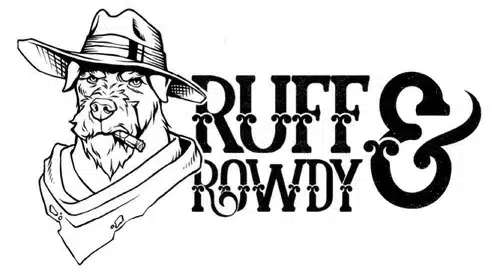Anxiety in Dogs: Signs, Symptoms, and Natural Solutions
Acknowledging and understanding anxiety in dogs is pivotal for ensuring their overall well-being and happiness. Anxiety is a universal emotion that transcends species, affecting not only humans but also our beloved canine companions. At Ruff & Rowdy, our commitment extends beyond superficial solutions, emphasizing the significance of addressing canine anxiety through holistic and non-medicated approaches. Delving into the complexities of anxiety in dogs unveils a spectrum of signs and symptoms that demand attention and compassionate care.
At Ruff & Rowdy, we advocate for natural methods aimed at alleviating canine anxiety. By fostering an environment of trust and comfort, we prioritize solutions that don’t rely on medication. We firmly believe in the power of positive reinforcement to encourage relaxation, providing dogs with the tools to cope with stressors in a healthier manner.
What Is Anxiety in Dogs?
Anxiety in dogs refers to a state of unease, worry, or fear triggered by various factors. It can manifest in different ways, impacting a dog’s behavior, health, and overall quality of life. Identifying these signs is fundamental in providing timely support to our furry friends.
Understanding anxiety in dogs is the first step toward effectively addressing their emotional needs. At Ruff & Rowdy, we’re committed to providing comprehensive guidance and support to pet owners navigating this challenging terrain. Our expert team offers tailored solutions and compassionate care, ensuring that every dog, regardless of their anxiety level, receives the attention and strategies they need to lead a happier, more balanced life.
Recognizing anxiety in dogs involves deciphering subtle behavioral cues and shifts that manifest in various ways. From incessant barking to destructive tendencies or noticeable restlessness, these signs often reflect underlying distress. Our profound understanding of these indicators empowers us to assist pet parents in identifying and comprehending their furry friend’s emotional state.
5 Signs of Anxiety in Dogs:
- Excessive Barking or Whining: Dogs vocalize their distress through incessant barking or whining.
- Destructive Behavior: Chewing furniture, scratching doors, or other destructive behaviors can stem from anxiety.
- Aggression or Withdrawal: Dogs may become unusually aggressive or withdrawn when anxious.
- Pacing or Restlessness: Constant pacing or inability to settle down might indicate anxiety.
- Excessive Panting or Trembling: Rapid panting or trembling, especially in non-stressful situations, could signal anxiety.
How to Tell If Your Dog Has Anxiety:
- Observe Behavior Changes: Note any sudden shifts in behavior or routine.
- Monitor Physical Cues: Pay attention to excessive panting, trembling, or restlessness.
- Assess Triggers: Identify situations or stimuli triggering anxious responses.
5 Steps to Managing Dog Anxiety:
- Space: Designate a cozy area where your dog can retreat during stressful times.
- Establish Routine: Consistent feeding, exercise, and sleep schedules provide stability.
- Regular Exercise: Adequate physical activity helps release pent-up energy and reduce anxiety.
- Work: Give your dog a job, such as search, tug, fetch. This can help release built up frustration.
- Positive Reinforcement: Reward calm behavior to reinforce a positive association with relaxation.
Having a dog experiencing anxiety can be challenging and heart-wrenching for any pet parent. At Ruff & Rowdy, we empathize with the struggles and understand the profound impact anxiety can have on both dogs and their human companions. We know the importance of addressing these concerns with care and compassion.
Remember, you’re not alone on this journey. Our team at Ruff & Rowdy is here to offer support, guidance, and valuable resources to help you navigate your dog’s anxiety. Whether you seek more information, professional training, or simply someone to talk to about your furry friend’s well-being, our experts are ready to assist.
Together, we can create a loving environment for your dog, implementing effective strategies that prioritize their comfort and happiness. Reach out to Ruff & Rowdy for further assistance and discover the difference understanding and dedicated care can make in managing your dog’s anxiety.
Anxiety in Dogs: Signs, Symptoms, and Natural Solutions Read More »






